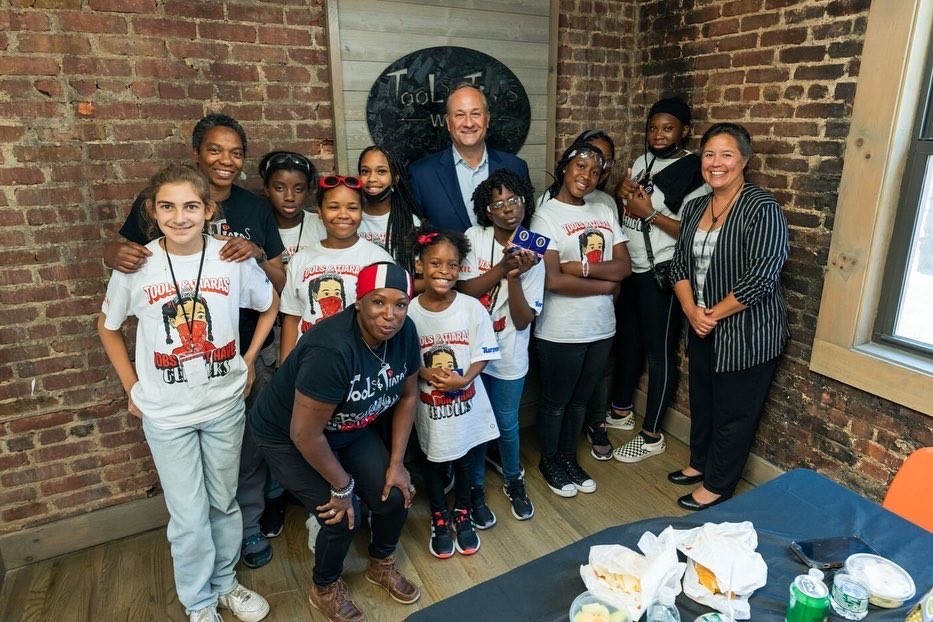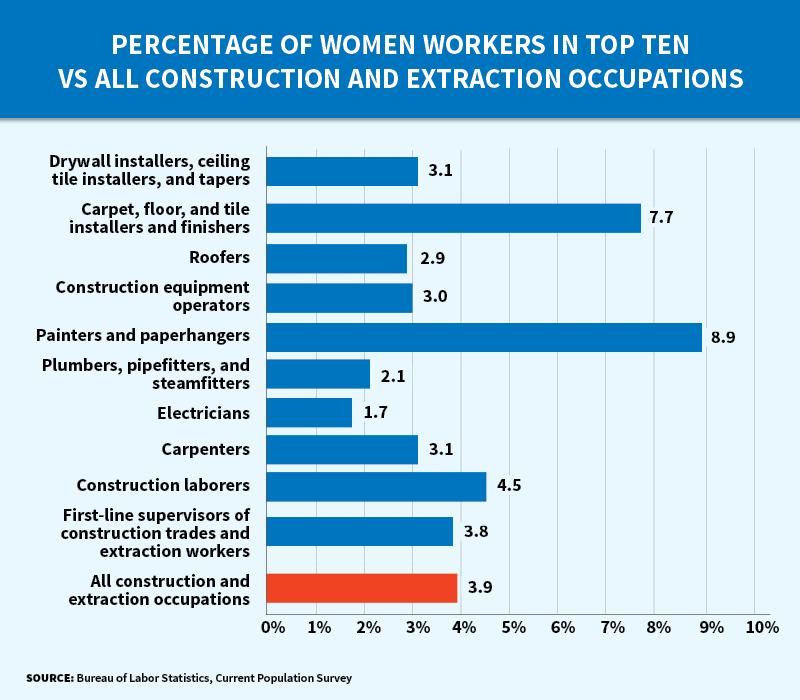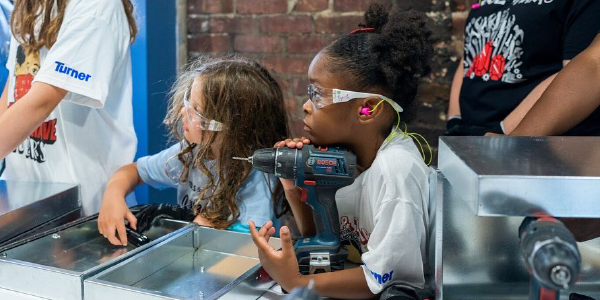Last month, Secretary of Labor Marty Walsh traveled to Jackson, Mississippi, where, joined by Women’s Bureau staff Charmaine Davis, Marlaina Guillaume and Sonya Black, he met with leaders from Moore Community House, a current grantee of the Department of Labor’s Women in Apprenticeship and Nontraditional Occupations (WANTO) grant program. Moore Community House, which has served families on Mississippi’s Gulf Coast for more than 90 years, uses a two-pronged approach to help promote economic security: providing women with workforce development training in construction and advanced manufacturing, as well as offering childcare.

Last week, Second Gentleman Doug Emhoff and Women’s Bureau Director Wendy Chun-Hoon traveled to New York to visit Tools & Tiaras, a summer camp for girls that creates a space for them to explore occupations where women comprise less than 25% of the workforce. During the visit, the girls were participating in a sheet metal workshop, learning the tools of a trade that currently has one of the lowest levels of female employment at only 3.9%. Judaline Cassidy, founder of Tools & Tiaras and a woman plumber in a male-dominated field, created the camp to show girls that “jobs don’t have genders.”
And later in the week, Secretary Walsh traveled to Pennsylvania to visit WINC (Women In Nontraditional Careers) of Philadelphia Works, a WANTO subgrantee of Chicago Women in Trades. During the visit, the Secretary, along with Women’s Bureau staff Nicole Neri and Rose Holandez, met with a cohort of women who had just started their pre-apprenticeship training program.
These trips highlight an important issue at a pivotal moment: the Bipartisan Infrastructure Law is investing billions of dollars to rebuild the nation’s infrastructure, but the jobs this money will fund are overwhelmingly held by men.
In June 2022, women accounted for almost exactly half of nonfarm employees. This is not a new phenomenon – women have been at least 49% of employees since 2008, but are still not evenly represented in many jobs, particularly in the skilled trades.
Women are only 3.9% of all workers in the construction and extraction occupations, and often the number of women workers in these fields is so small that detailed occupational data is not available. Even among the most common construction jobs for women like painting and floor installation, they never exceed 9% of the workforce.

Why is this significant? Because these are jobs that typically pay higher than median wages and do not require a college degree, meaning they can represent a meaningful pathway to economic security for workers without degrees. By contrast to jobs that require post-secondary education, many jobs in the skilled trades require on-the-job training and prior work experience, both of which can be acquired through apprenticeships.
High-quality apprenticeships provide the opportunity for people to develop skills and gain on-the-job experience in the trades, and rather than paying tuition, apprentices get paid as they learn. These opportunities also pay dividends down the line. One study found that workers who complete Registered Apprenticeships have an average of $240,000 in higher wages over the course of a career when compared to similar workers who have not gone through an apprenticeship. But women are also far less likely to participate in vocational training programs and Registered Apprenticeships, particularly those in the skilled trades.
There are a host of different reasons why women have historically been shut out of many occupations and apprenticeship opportunities, many of which are detailed in the Department of Labor’s report, Bearing the Cost. One of the most challenging impediments is the way that women and girls are subject to gendered stereotypes and norms that can shape the course of their lives starting at a very young age. Girls are less likely to work with tools while growing up and often lack the networks and connections that can be pathways into apprenticeships and job opportunities. Programs like Tools & Tiaras, which help girls build familiarity and confidence working with tools and expose them to opportunities in the trades, can set them upon a path to build the skills and networks that can support a successful future career.

California, Texas, Florida, New York and Pennsylvania currently employ the most workers in construction and extraction jobs. Our new interactive, “Employment and Earnings by Sex and Race: Exploring Equal Employment Opportunity Data Map” lets you see the share of full-time workers and median earnings by state for 7 racial/ethnic groups and 236 occupations. For example, nationally, construction and building inspectors have the “best” representation of women workers, at 10% of all workers. In Texas, 5% of inspectors are Latinas, 3% are white women, and 1% are Black women. While their numbers might be small, these Black and Latina women out-earn most of their counterparts, with higher median wages than Black, Latino, and white men in the same occupation.
The Bipartisan Infrastructure Law is making historic investments in construction, transportation and energy right now, and we need to make sure that equity is a priority outcome for these funds. The Department of Labor, in partnership with the Department of Commerce, created the Good Jobs Principles to centralize efforts to ensure that the jobs being created are high-quality jobs – a key pillar of which is ensuring that historically underrepresented groups like women have equal opportunity.
The Women’s Bureau has long been a champion of pre-apprenticeship and apprenticeship opportunities through its Women in Apprenticeship and Nontraditional Occupations grant program. Since 2017, we’ve awarded nearly $12 million to 22 community-based organizations to increase the number of women, especially women of color, in pre-apprenticeships, Registered Apprenticeships and historically male-dominated jobs. We will award an additional $3.4 million for up to nine grants this year. Creating meaningful pathways for women and girls to enter nontraditional occupations is more important now than ever.
Sarah Jane Glynn is a senior advisor with the Women’s Bureau. Follow the Women’s Bureau on Twitter: @WB_DOL.

 U.S. Department of Labor Blog
U.S. Department of Labor Blog